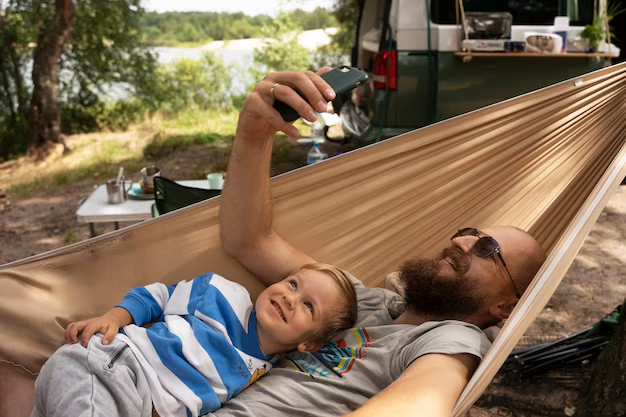How to Turn On Your RV Refrigerator: A Step-by-Step Guide
Imagine you're on the open road, exploring scenic routes and living the life of freedom and adventure in your RV. Everything seems perfect until you realize your refrigerator isn't running, and your perishables are in peril. Fear not! This comprehensive guide will walk you through the process of turning on your RV refrigerator, getting you back on track for a worry-free journey.
Understanding Your RV Refrigerator
Before diving into the steps to turn on your RV refrigerator, it's crucial to understand the basics of how it operates. RV refrigerators are quite different from the standard home appliances. They are typically absorption refrigerators, which means they don't use a compressor. Instead, they use heat to start a chemical reaction that draws out the heat from the refrigerator's interior. This unique system can be powered by electricity (AC or DC) or propane gas.
Types of Power Sources
AC Power: Most RV refrigerators can run on a standard 120-volt power supply when your RV is connected to a campground hookup or generator.
DC Power: When on the road, some refrigerators can switch to a 12-volt power supply drawn from your RV's battery.
Propane Gas: RV refrigerators can also be powered by propane, which is handy when boondocking or camping off-grid.
Switching Between Power Sources
One of the significant advantages of an RV refrigerator is its ability to switch between power sources. This flexibility ensures your food stays cold regardless of your camping situation.
Steps to Turn On Your RV Refrigerator
1. Check Connectivity and Power Source
Before turning on your refrigerator, ensure your RV is properly connected to a power source. If you're at a campsite, connect to the AC power. For off-grid camping, ensure your propane tank is full.
Tips:
- 🔌 Always verify power connections when setting up at a new campsite.
- 🔋 Ensure your RV batteries are charged if relying on DC power.
2. Locate and Set Power Source Selector
Many RV refrigerators come with a power source selector switch or button. This control allows you to choose between AC, DC, and propane. Generally located near the control panel, the switch should clearly label each power option.
Tips:
- 💡 Switch to the correct power source based on your current location and setup.
3. Ignite the Refrigerator (If Using Propane)
When using propane, you'll need to light the pilot light in many models.
Steps:
- Find the pilot light access, which is usually located at the back of the refrigerator, accessible through a panel.
- Turn the gas valve to the “on” position.
- Use a lighter or the built-in igniter to light the pilot.
Tips:
- 🔥 Ensure the pilot light is lit by viewing through the access panel.
- 🛠️ Keep a handheld lighter handy for models that do not have an automatic igniter.
4. Adjust the Temperature Settings
Once your refrigerator is powered, set the temperature using the control knob or digital setting. Most RV refrigerators have a range from 1 (warmest) to 5 (coldest).
Tips:
- 🌡️ Set the temperature to the middle setting first and adjust based on cooling results.
- 🍓 Consider an RV-specific refrigerator thermometer to verify the temperature inside.
5. Monitor and Stabilize the Temperature
It can take several hours for the refrigerator to reach optimal cooling temperatures, so patience is key. Monitor the internal temperature after a few hours, especially if newly powered up.
Tips:
- ⏲️ Allow at least 4-6 hours for full cooling before adding perishables.
- 📦 Space out items inside for better airflow and consistent cooling.
Troubleshooting Common Issues
Even with everything set correctly, you might encounter issues. Here's how to tackle a few common problems.
Refrigerator Not Cooling
- Check Power Connections: Make sure your power source is active and properly connected.
- Inspect the Thermostat: If settings are too low, the refrigerator might struggle to cool effectively.
- Confirm Adequate Ventilation: Ensure the back of the refrigerator has good airflow.
Pilot Light Won't Ignite
- Verify Gas Supply: Check that the propane tank is full and the valve is open.
- Clean the Burner: Residues can block the gas flow and should be cleaned regularly.
Refrigerator Shuts Off
- Secure Connections: Loose or corroded connections can cause power interruptions.
- Battery Charge: Check your battery if the fridge runs on DC power and charge if necessary.
Maintenance Tips to Keep Your RV Fridge Running Smoothly
Regular Cleaning
Regularly clean the refrigerator's interior and door seals to prevent mold and ensure proper sealing.
Vent and Burner Maintenance
- Keep vents clear and clean the propane burner and flue periodically for optimal performance.
Leveling Your RV
Absorption refrigerators must be level to operate effectively. Use a spirit level to ensure stability whenever you park your RV.
Summary Section: Key Tips for Using Your RV Refrigerator 🚐
- Check power connections at every new campsite. 🔌
- Set the power switch based on connection: AC, DC, or propane. 💡
- Light the pilot for propane models. Ignite manually if necessary. 🔥
- Adjust the temperature to mid-setting initially and monitor. 🌡️
- Space out your provisions in the fridge for even cooling. 📦
- Clean regularly and keep vents open for efficient operation. 🛠️
- Ensure your RV is level for optimal refrigerator function. 📏
Experience the joys of life on the road without the worry of warm drinks or spoiled food. By following these steps and maintenance tips, you'll ensure a hassle-free experience every time you power up your RV refrigerator. Safe travels and happy camping!
